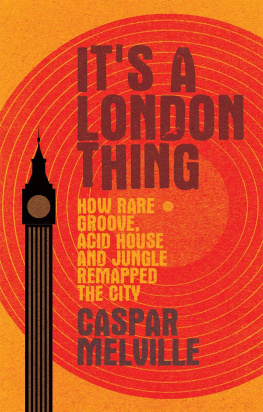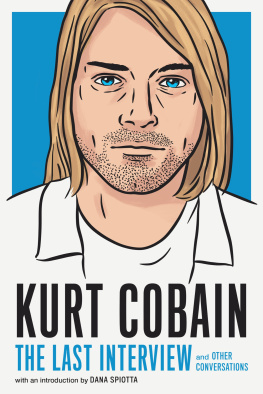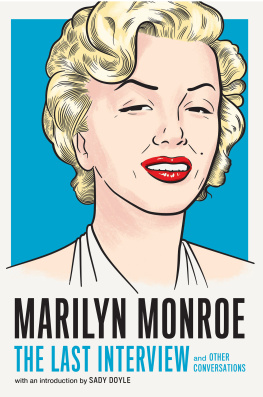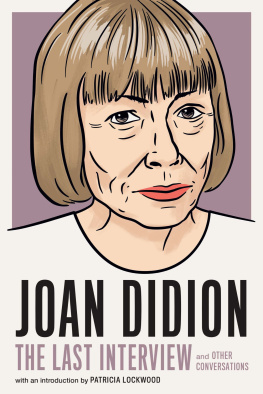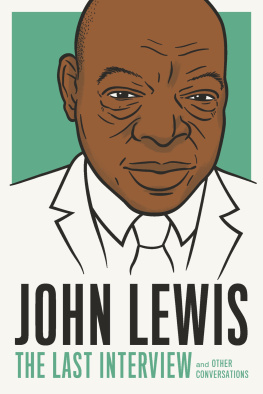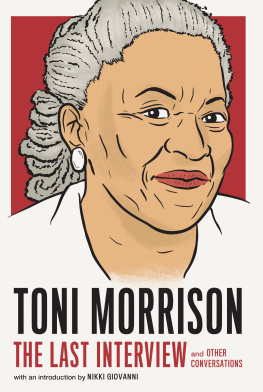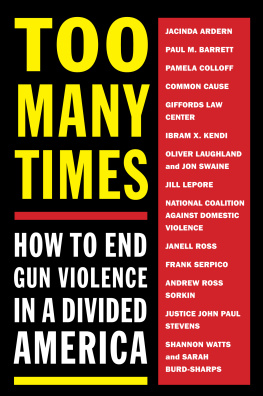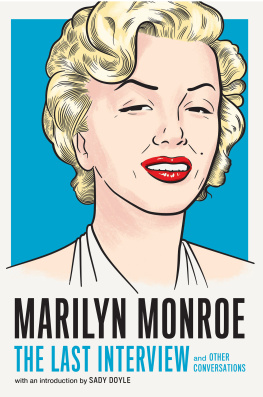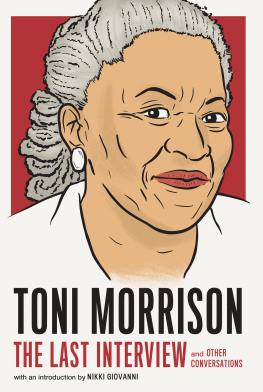Caspar Melville - Its A London Thing: How Rare Groove, Acid House and Jungle Remapped the City
Here you can read online Caspar Melville - Its A London Thing: How Rare Groove, Acid House and Jungle Remapped the City full text of the book (entire story) in english for free. Download pdf and epub, get meaning, cover and reviews about this ebook. year: 2020, publisher: Manchester University Press, genre: Politics. Description of the work, (preface) as well as reviews are available. Best literature library LitArk.com created for fans of good reading and offers a wide selection of genres:
Romance novel
Science fiction
Adventure
Detective
Science
History
Home and family
Prose
Art
Politics
Computer
Non-fiction
Religion
Business
Children
Humor
Choose a favorite category and find really read worthwhile books. Enjoy immersion in the world of imagination, feel the emotions of the characters or learn something new for yourself, make an fascinating discovery.
- Book:Its A London Thing: How Rare Groove, Acid House and Jungle Remapped the City
- Author:
- Publisher:Manchester University Press
- Genre:
- Year:2020
- Rating:4 / 5
- Favourites:Add to favourites
- Your mark:
- 80
- 1
- 2
- 3
- 4
- 5
Its A London Thing: How Rare Groove, Acid House and Jungle Remapped the City: summary, description and annotation
We offer to read an annotation, description, summary or preface (depends on what the author of the book "Its A London Thing: How Rare Groove, Acid House and Jungle Remapped the City" wrote himself). If you haven't found the necessary information about the book — write in the comments, we will try to find it.
Caspar Melville: author's other books
Who wrote Its A London Thing: How Rare Groove, Acid House and Jungle Remapped the City? Find out the surname, the name of the author of the book and a list of all author's works by series.
Its A London Thing: How Rare Groove, Acid House and Jungle Remapped the City — read online for free the complete book (whole text) full work
Below is the text of the book, divided by pages. System saving the place of the last page read, allows you to conveniently read the book "Its A London Thing: How Rare Groove, Acid House and Jungle Remapped the City" online for free, without having to search again every time where you left off. Put a bookmark, and you can go to the page where you finished reading at any time.
Font size:
Interval:
Bookmark:
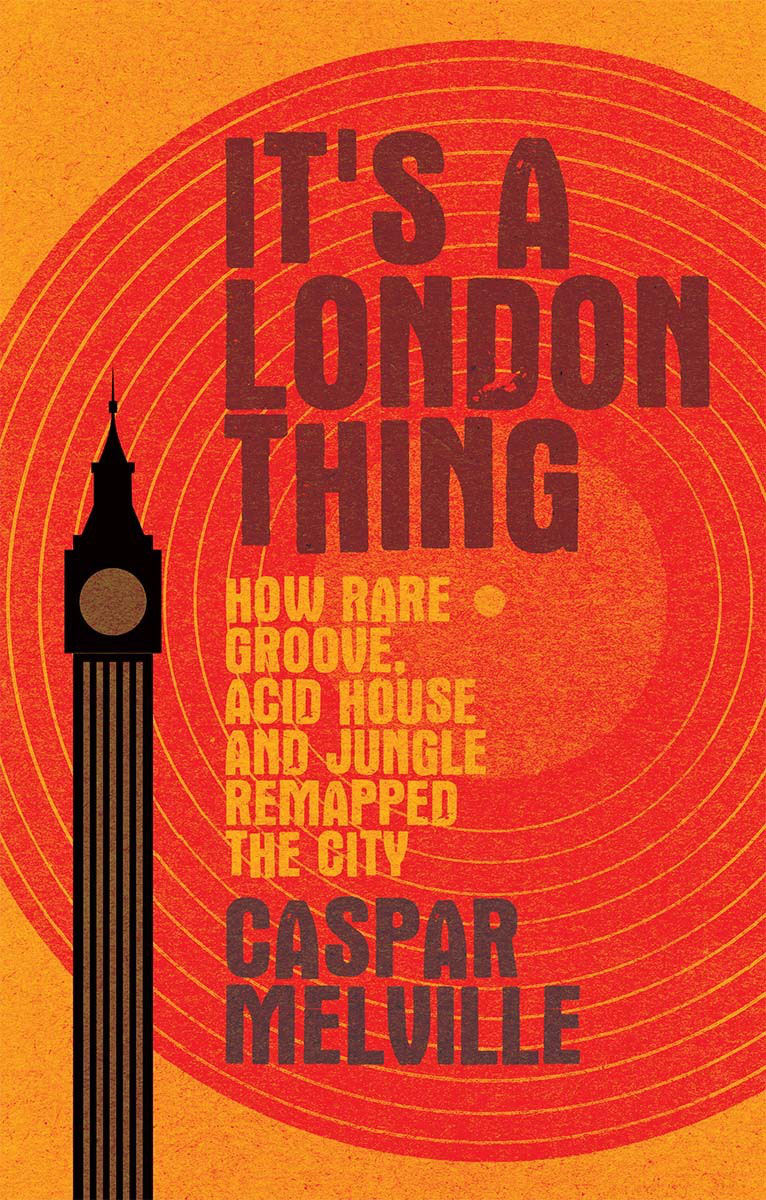


Music and Society aims to bridge the gap between music scholarship and the human sciences. A deliberately eclectic series, its authors are nevertheless united by the contention that music is a social product, social resource, and social practice. As such it is not autonomous but is created and performed by real people in particular times and places; in doing so they reveal much about themselves and their societies.
In contrast to the established academic discourse, Music and Society is concerned with all forms of music, and seeks to encourage the scholarly analysis of both popular styles and those which have for too long been marginalised by that discourse folk and ethnic traditions, music by and for women, jazz, rock, rap, reggae, muzak and so on. These sounds are vital ingredients in the contemporary cultural mix, and their neglect by serious scholars itself tells us much about the social and cultural stratification of our society.
The time is right to take a fresh look at music and its effects, as todays music resonates with the consequences of cultural globalisation and the transformations wrought by new electronic media, and as past styles are reinvented in the light of present concerns. There is, too, a tremendous upsurge of interest in cultural analysis. Music and Society does not promote a particular school of thought, but aims to provide a forum for debate; in doing so, the titles in the series bring music back into the heart of socio-cultural analysis.
The land without music: music, culture and society in twentieth-century Britain
Andrew Blake
Networks of sound, style and subversion: The punk and post-punk worlds of Manchester, London, Liverpool and Sheffield, 197580
Nick Crossley
Music and the sociological gaze: art worlds and cultural production
Peter J. Martin
Sounds and society: themes in the sociology of music
Peter J. Martin
Popular music on screen: from the Hollywood musical to music video
John Mundy
Popular music in England 18401914: a social history (2nd edition)
Dave Russell
The English musical renaissance, 18401940: constructing a national music (2nd edition)
Robert Stradling and Meirion Hughes
Time and memory in reggae music: the politics of hope
Sarah Daynes
Essays on The Smiths: Why Pamper Lifes Complexities?
Sean Campbell and Colin Coulter (eds)
Its a London thing
How rare groove, acid house and jungle remapped the city
Caspar Melville
Manchester University Press
Copyright Caspar Melville 2020
The right of Caspar Melville to be identified as the author of this work has been asserted by him in accordance with the Copyright, Designs and Patents Act 1988.
Published by Manchester University Press
Altrincham Street, Manchester M1 7JA
www.manchesteruniversitypress.co.uk
British Library Cataloguing-in-Publication Data
A catalogue record for this book is available from the British Library
ISBN 978 1 5261 3123 2 hardback
ISBN 978 1 5261 3125 6 paperback
First published 2020
The publisher has no responsibility for the persistence or accuracy of URLs for any external or third-party internet websites referred to in this book, and does not guarantee that any content on such websites is, or will remain, accurate or appropriate.
Typeset in Minion and Frutiger
by R. J. Footring Ltd, Derby, UK
The plates section begins opposite page 80
More than thirty years ago I stood on a London rooftop looking out over St Pauls Cathedral and the City of London as the sun came up into a pale blue summer sky. I was not alone: there were dozens of us on the roof, smiling and smoking, dazzled by the new morning. We had come up a dusty staircase from two floors below, where for the past eight hours we, and thousands of others, had been dancing to the music soul, funk, disco, boogie, reggae and hip hop supplied by DJ Norman Jay and his bass-heavy Good Times sound system. While it was musicians and producers from Chicago, New York, New Orleans and Kingston, Jamaica who originally made the music and Norman Jay who had put it in potent juxtaposition, what happened that night was an act of collective creation, a co-production by musician, producer, DJ, technology and us, the dancing crowd. Together we had brought the dead space of an abandoned and seemingly unloved warehouse to life and made it a space of collaboration and joy.
I felt an exhausted euphoria. Some of this was, no doubt, the result of the subconscious chemical processes of the body releasing endorphins after long hours of dancing, and the pretty sunrise. I was young then, and optimistic. But still I felt and still feel that I had been a part of something important: a group of disparate individuals synchronised by rhythm, orchestrated difference. This seemed especially important because the city we were in, the London in which I was born and grew up, was divided, especially by race. The forces that conspired to keep us apart, assigned to different spaces, had tenuously and temporarily perhaps been defeated that night. This was not the result of an organised political campaign or programme but a night-long moment in which racial division was overcome. For me, it had the force of epiphany.
The intake at my London state schools had been diverse in terms of class and race, reflecting the economic and ethnic diversity of Lambeth. At primary school in Kennington we played happily side by side, though at the school gates we went our separate ways. By the time I got to secondary school in the late 1970s a large comprehensive of 2,000 kids from Pimlico, Stockwell, Vauxhall, Brixton and Fulham friendships across class and race lines were commonplace, forged by everyday proximity and shared rituals of sport, classroom disruption and viciously funny schoolyard cussing. But these bonds were vulnerable and loosened as we moved from the classroom and playground back into the streets and the private sphere of home. School was policed by the deputy head, who enforced no-running-in-the-corridor rules, which we could all equally ignore, but the space outside was subject to more complex and divisive kinds of regulation, which was anything but equal.
Outside school we shared streets, buses, shops, tube carriages and hospital waiting rooms. But something I was not then able to name kept us separate. Class distinctions played out in space my white middle-class family had a garden, and close by were the park and my friends houses; the children from Dorset Road Estate, the large social housing block at the end of my road, played out (though not all were not allowed to); friends knocked for them and they slipped away from parental surveillance. Id have liked to do this too, but I never did. My parents might have let me, but equally it might have contravened some of their basic middle-class values to allow their child to run wild in the streets. A spatial taxonomy was maintained, policed by mutual misunderstanding. As the anthropologist of class difference Pierre Bourdieu remarked, you get the city that goes with your social and cultural capital. In this sense, though we lived in shared space, we lived in different cities.
Font size:
Interval:
Bookmark:
Similar books «Its A London Thing: How Rare Groove, Acid House and Jungle Remapped the City»
Look at similar books to Its A London Thing: How Rare Groove, Acid House and Jungle Remapped the City. We have selected literature similar in name and meaning in the hope of providing readers with more options to find new, interesting, not yet read works.
Discussion, reviews of the book Its A London Thing: How Rare Groove, Acid House and Jungle Remapped the City and just readers' own opinions. Leave your comments, write what you think about the work, its meaning or the main characters. Specify what exactly you liked and what you didn't like, and why you think so.

